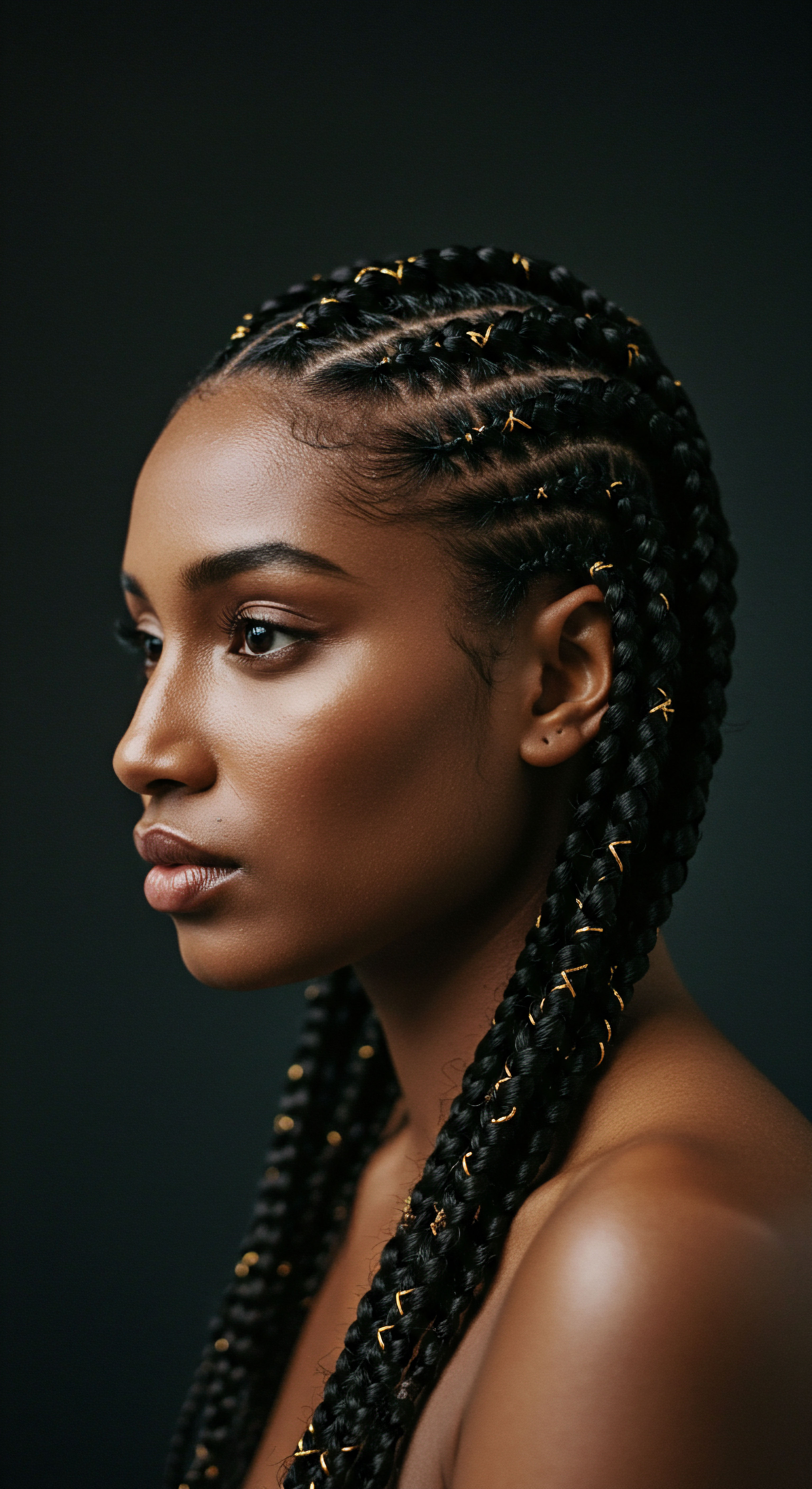
Roots
The whisper of the scalp, often unheard, holds a universe of activity. Beneath the visible strands, a vibrant ecosystem exists, a delicate balance of microorganisms living in quiet accord. For generations, textured hair communities have understood this instinctively, tending to their scalps with a reverence for well-being that goes beyond mere appearance.
This intuitive care, often involving the application of various oils, prompts a fascinating inquiry into how these ancient practices align with contemporary scientific understanding. Our exploration begins at the very foundation of this relationship, examining the microscopic inhabitants of the scalp and their intricate dance with the oils we introduce.
The scalp is not merely a surface for hair to grow; it is a complex environment, a thriving landscape for a diverse community of microbes. This collection of bacteria, fungi, and viruses forms what scientists term the Scalp Microbiome. Just like the soil supporting a garden, a balanced scalp microbiome is essential for a healthy scalp and, by extension, healthy hair growth. When this delicate equilibrium is disturbed, an array of common scalp conditions can arise, from dryness and irritation to the persistent flaking known as dandruff.
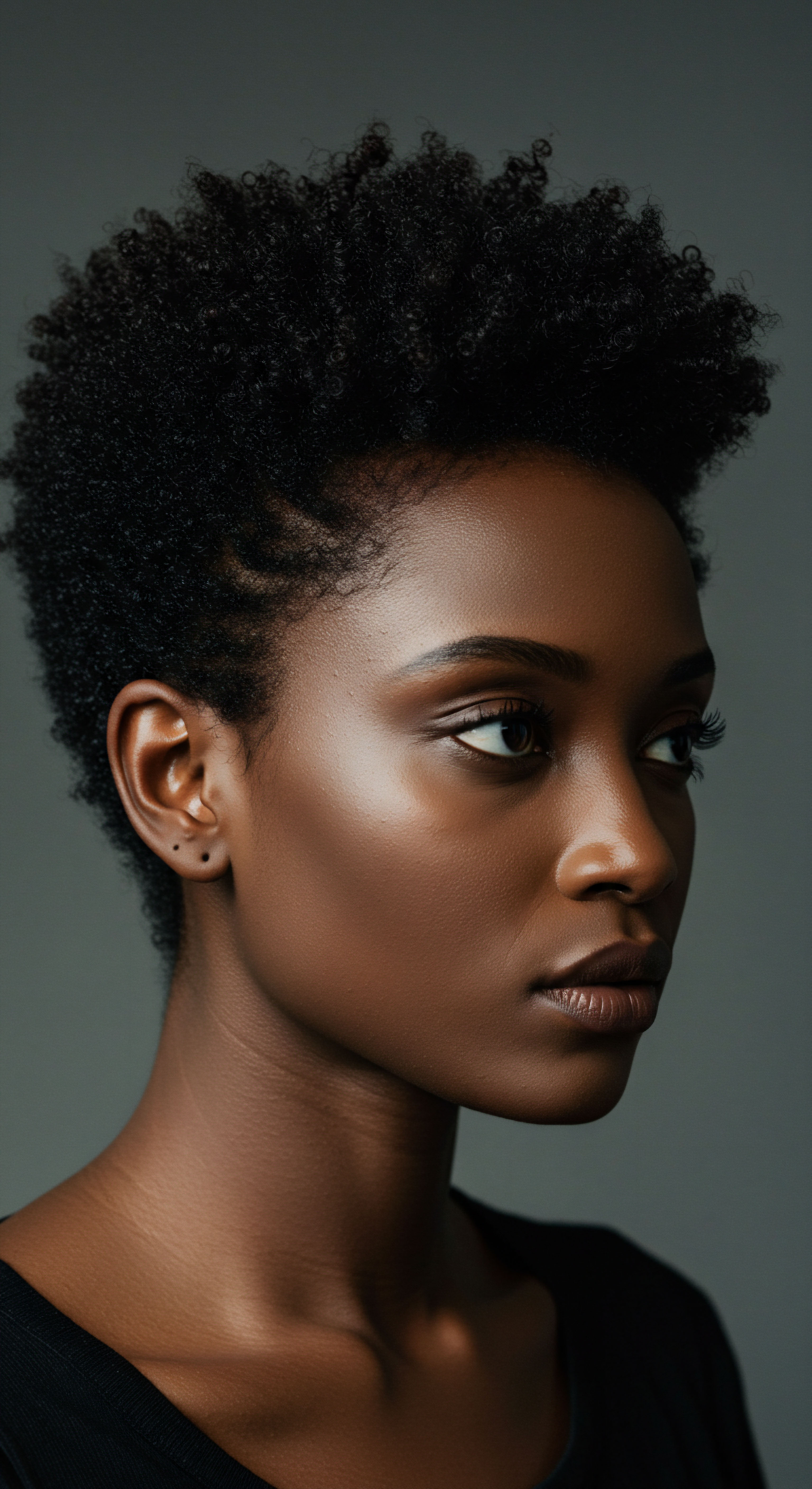
Understanding the Fungal Residents
Among the most studied residents of the scalp’s microbial community are the fungi, particularly members of the Malassezia Genus. These yeasts are a natural part of the human skin’s flora, typically existing without causing trouble. However, under certain conditions, their populations can multiply beyond their usual numbers, leading to conditions like seborrheic dermatitis, which manifests as persistent dandruff. Malassezia are unique in their dietary preferences; they are Lipophilic, meaning they require fats to grow.
They feed on the sebum, the natural oil produced by our sebaceous glands, breaking down its triglycerides into free fatty acids. While some of these fatty acids are harmless, others can become irritating, triggering inflammation and the characteristic flaking associated with dandruff.
The scalp’s invisible inhabitants, especially Malassezia yeasts, play a central role in scalp health, thriving on the natural oils present.
The interaction between Malassezia and scalp oils is a critical point of focus. Consider the way these organisms are cultured in laboratory settings ❉ researchers often use lipid supplements, such as olive oil, to encourage their growth. This fundamental biological need reveals a profound truth about how the oils we apply to our scalps might influence these fungal populations. The type of fatty acids present in an oil can determine whether it becomes a feast for Malassezia or a barrier to its unchecked growth.

How Does Scalp Oil Influence Fungi?
The effect of oils on scalp fungal populations is not a simple matter of presence or absence. Instead, it involves a complex interplay of factors, including the specific composition of the oil, the existing state of the scalp microbiome, and individual sensitivities. Some oils, rich in certain fatty acids, can provide a ready food source for Malassezia, potentially exacerbating conditions. Other oils, or specific compounds within them, might possess properties that inhibit fungal growth or help restore a more harmonious scalp environment.
- Malassezia Globosa ❉ Often associated with healthy scalp conditions, its presence can be a marker of balance.
- Malassezia Restricta ❉ Frequently linked to dandruff and seborrheic dermatitis, its increased numbers signal an imbalance.
- Sebum ❉ The natural oil produced by the scalp, which Malassezia consume, highlights the importance of managing scalp oil levels.
Understanding the very essence of the scalp’s microbial life, particularly the fungal elements, provides a grounding presence for any discussion of topical treatments. It is a world where tiny organisms wield significant influence, and where the choices we make in our hair care practices can subtly, yet powerfully, reshape this unseen landscape.

Ritual
Our hands, guided by generations of wisdom, often reach for oils as a part of a hair care ritual. The gentle warming, the careful application to strands and scalp, speaks to a deeply held belief in their power to nourish and protect. Yet, as we move from the comforting certainty of tradition to the illuminating clarity of scientific inquiry, a deeper understanding of these practices unfolds. This section explores how the familiar act of oiling, a cherished custom in many textured hair routines, interacts with the scalp’s unseen fungal inhabitants, drawing upon research to shed light on its effects.
The practice of applying oils to the hair and scalp is deeply embedded in the cultural heritage of many communities, particularly those with textured hair. From the pre-wash rituals of South Asia to the scalp greasing customs in African communities, oils like coconut, olive, and jojoba have been applied with the hope of promoting health, shine, and growth. These practices, while often beneficial for the hair shaft itself, warrant a closer look when considering their direct impact on the scalp’s living surface and its fungal residents.

Oils and Their Unseen Interactions
The scientific community has begun to unravel the complex relationship between various oils and the scalp microbiome, particularly the Malassezia species that contribute to dandruff and seborrheic dermatitis. The efficacy of an oil is not uniform; rather, it depends on its chemical makeup and how those components interact with the scalp’s ecosystem.
Traditional oiling practices, when viewed through a scientific lens, reveal a complex interplay with the scalp’s fungal populations.

Coconut Oil A Case of Balance
Among the most widely used oils, Coconut Oil holds a unique position. It contains a high concentration of lauric acid, a medium-chain fatty acid that has shown promising antifungal activity in laboratory settings. A notable longitudinal study conducted on a cohort of 140 Indian women, comprising both healthy individuals and those experiencing dandruff, offered compelling insights. This research indicated that the regular application of coconut oil could positively influence the scalp’s fungal community.
Specifically, it observed an increase in the abundance of Malassezia Globosa, a species often linked with a balanced scalp, while simultaneously noting a reduction in Malassezia Restricta, a species frequently associated with dandruff, within the group experiencing scalp issues. This suggests that coconut oil may not simply eradicate fungi, but rather contribute to a more harmonious fungal population, supporting the species that belong to a healthy scalp.
The impact of coconut oil extends beyond direct antifungal action. It has also been shown to reduce trans-epidermal water loss (TEWL) and enhance skin hydration, factors that indirectly support a healthy scalp barrier. A robust skin barrier is a fundamental component of a balanced microbiome, creating an environment less hospitable to opportunistic fungal overgrowth.

Olive Oil A Delicate Consideration
In contrast to coconut oil, the use of Olive Oil on the scalp presents a more nuanced picture. While it is a popular ingredient in many traditional hair care practices and offers moisturizing benefits for the hair strands, its impact on scalp fungi requires careful consideration. Malassezia yeasts, which thrive on fats, are particularly fond of the saturated fatty acids present in plant oils such as olive oil.
Researchers, in fact, frequently use olive oil as a lipid supplement to encourage the growth of Malassezia in laboratory cultures. This suggests that for individuals prone to Malassezia-related scalp conditions like dandruff, applying olive oil directly to the scalp might inadvertently provide a rich food source for the very fungi one seeks to manage, potentially worsening the condition.
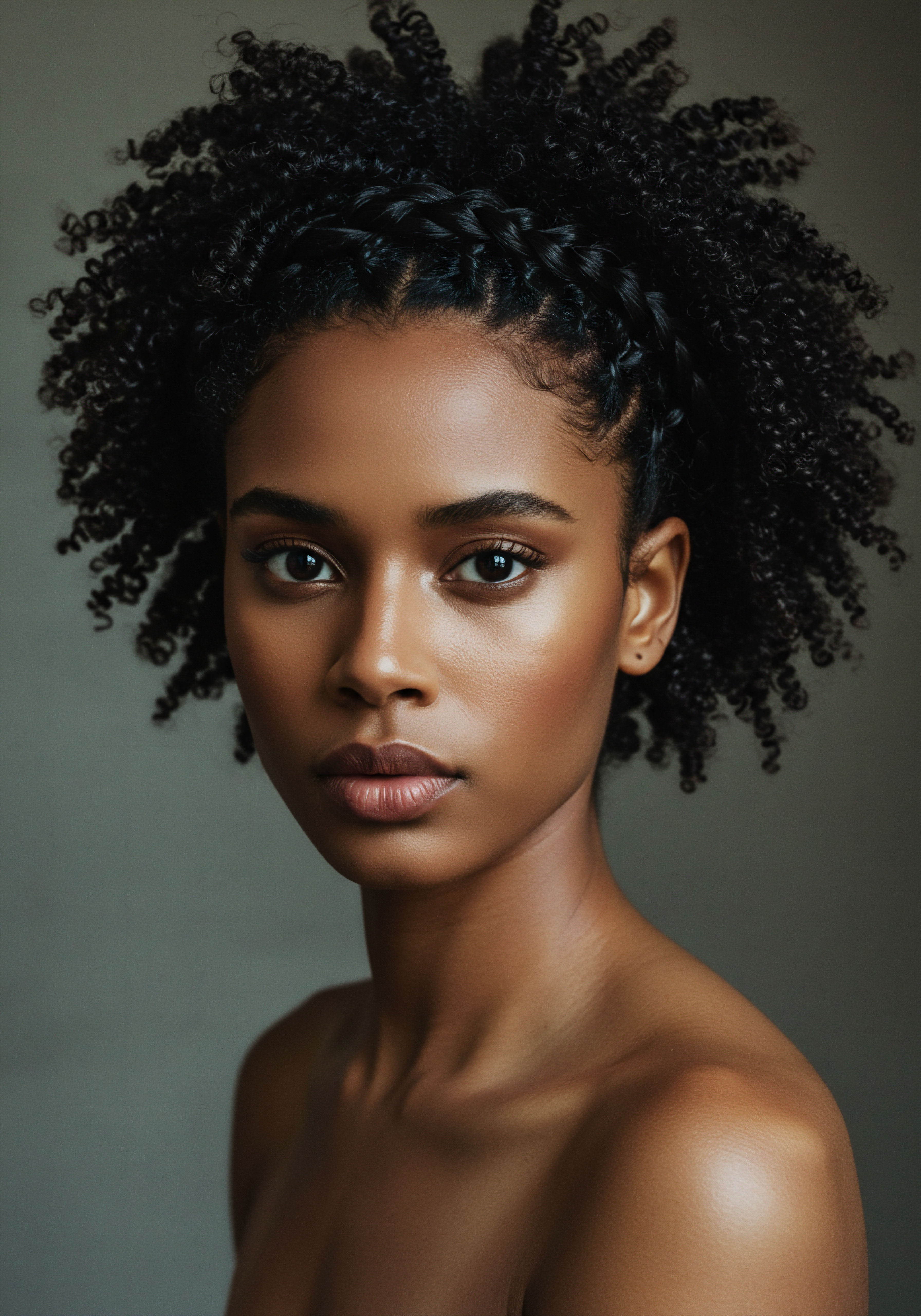
Jojoba Oil A Sebum-Like Ally
Jojoba Oil, uniquely a liquid wax rather than a true oil, closely resembles the natural sebum produced by the human scalp. This structural similarity allows it to interact with the scalp in a distinct manner. Jojoba oil possesses both antifungal and antibacterial properties, which may assist in managing scalp conditions like dandruff. Its ability to penetrate hair follicles and dissolve accumulated sebum deposits could also be beneficial, helping to clear pathways and reduce the environment where Malassezia might flourish due to excess lipids.
However, individual responses can differ. One reported instance highlights a person developing fungal folliculitis after using jojoba oil while on antibiotics, underscoring the complexities of individual microbiome responses and the potential for unexpected outcomes when the delicate balance is disrupted.
| Oil Type Coconut Oil |
| Key Properties Lauric acid content, moisturizing |
| Reported Fungal Interaction Increases beneficial Malassezia globosa, reduces Malassezia restricta |
| Oil Type Olive Oil |
| Key Properties Rich in saturated fatty acids |
| Reported Fungal Interaction Can feed Malassezia, potentially worsening dandruff |
| Oil Type Jojoba Oil |
| Key Properties Sebum-like, antifungal, antibacterial |
| Reported Fungal Interaction May help balance scalp lipids, potential for individual adverse reactions |
| Oil Type Tea Tree Oil |
| Key Properties Antifungal, anti-inflammatory |
| Reported Fungal Interaction Reduces dandruff symptoms, combats Malassezia |
| Oil Type Rosemary Oil |
| Key Properties Antifungal |
| Reported Fungal Interaction Shows effects against Malassezia, improves seborrheic dermatitis symptoms |
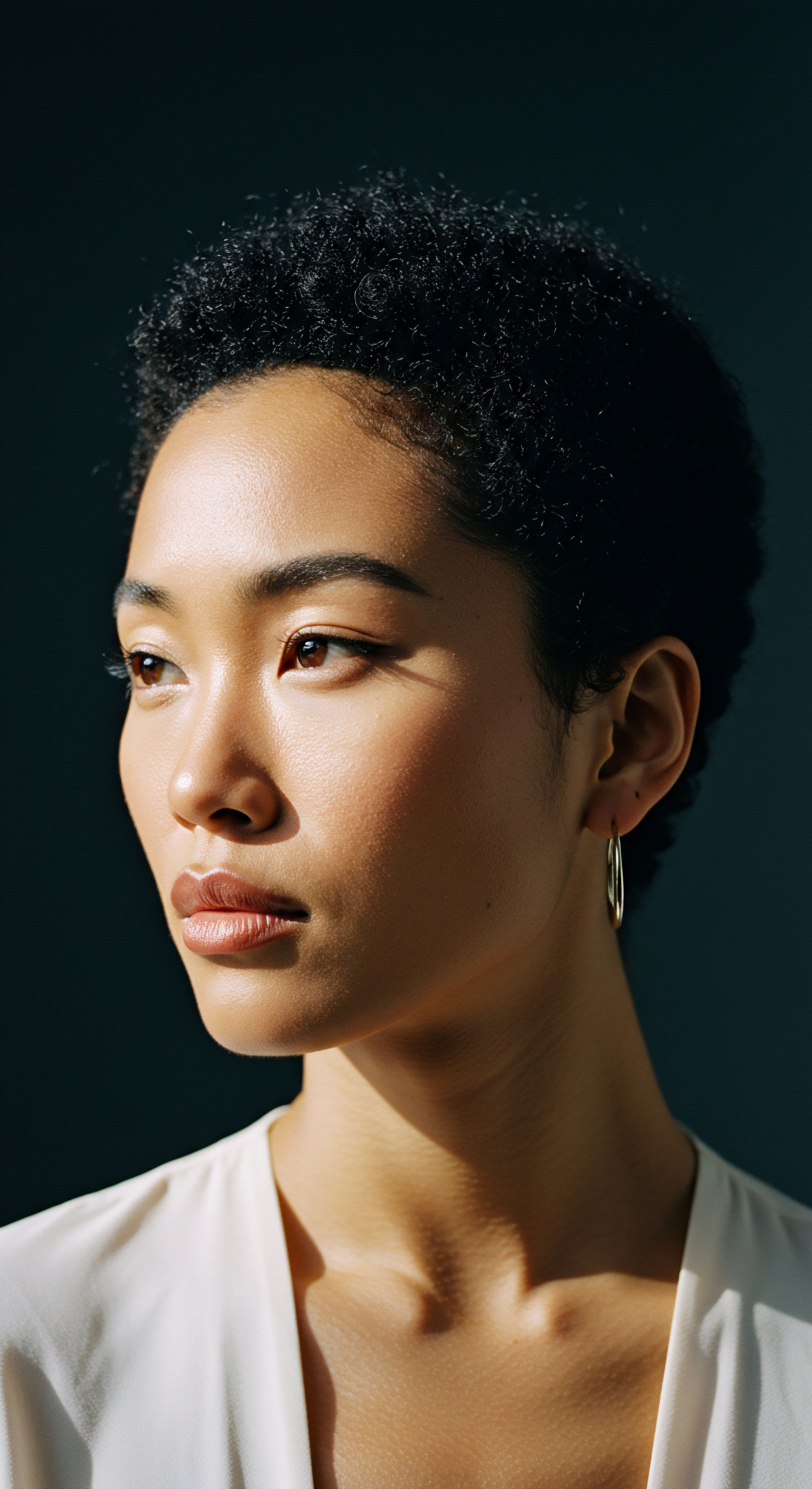
Tea Tree and Rosemary Oils Targeted Support
Essential oils like Tea Tree Oil and Rosemary Oil have garnered attention for their more direct antimicrobial properties. Tea tree oil, derived from the Melaleuca alternifolia plant, is well-regarded for its potent antifungal and anti-inflammatory qualities. Studies have shown that shampoos containing tea tree oil can significantly reduce dandruff symptoms, suggesting its effectiveness against Malassezia. Similarly, rosemary oil has demonstrated antifungal effects against Malassezia species.
A clinical trial even compared rosemary extract lotion to ketoconazole lotion, a conventional antifungal treatment, for seborrheic dermatitis, observing positive improvements in symptoms. These essential oils, when properly diluted with a carrier oil, offer a more targeted approach to managing fungal populations.
The ritual of oiling the scalp, steeped in cultural meaning, can be refined with scientific insight. Understanding which oils may nourish the scalp’s fungal populations and which may help balance them empowers us to make choices that truly serve the health of our textured hair.

Relay
To truly comprehend the delicate interplay between oils and the scalp’s fungal inhabitants, we must move beyond simple observation and into the deeper currents of scientific inquiry. This requires connecting the threads of molecular biology, clinical observations, and even historical context, allowing us to build a comprehensive picture. How do the components within these oils actually interact with the microscopic life on our scalps?
What does the most current research reveal about these subtle, yet profound, changes? Our exploration here aims to provide a sophisticated lens through which to view these complex interactions, drawing upon the latest data to illuminate the unseen mechanisms at play.
The scientific investigation into how oils influence scalp fungal populations is a dynamic and evolving field. It extends beyond merely observing changes in dandruff flakes; it probes the molecular mechanisms, the specific fatty acid profiles, and the broader impact on the scalp’s intricate microbial community. This understanding is vital, particularly for textured hair, where scalp health often dictates the very vitality of the hair strands themselves.
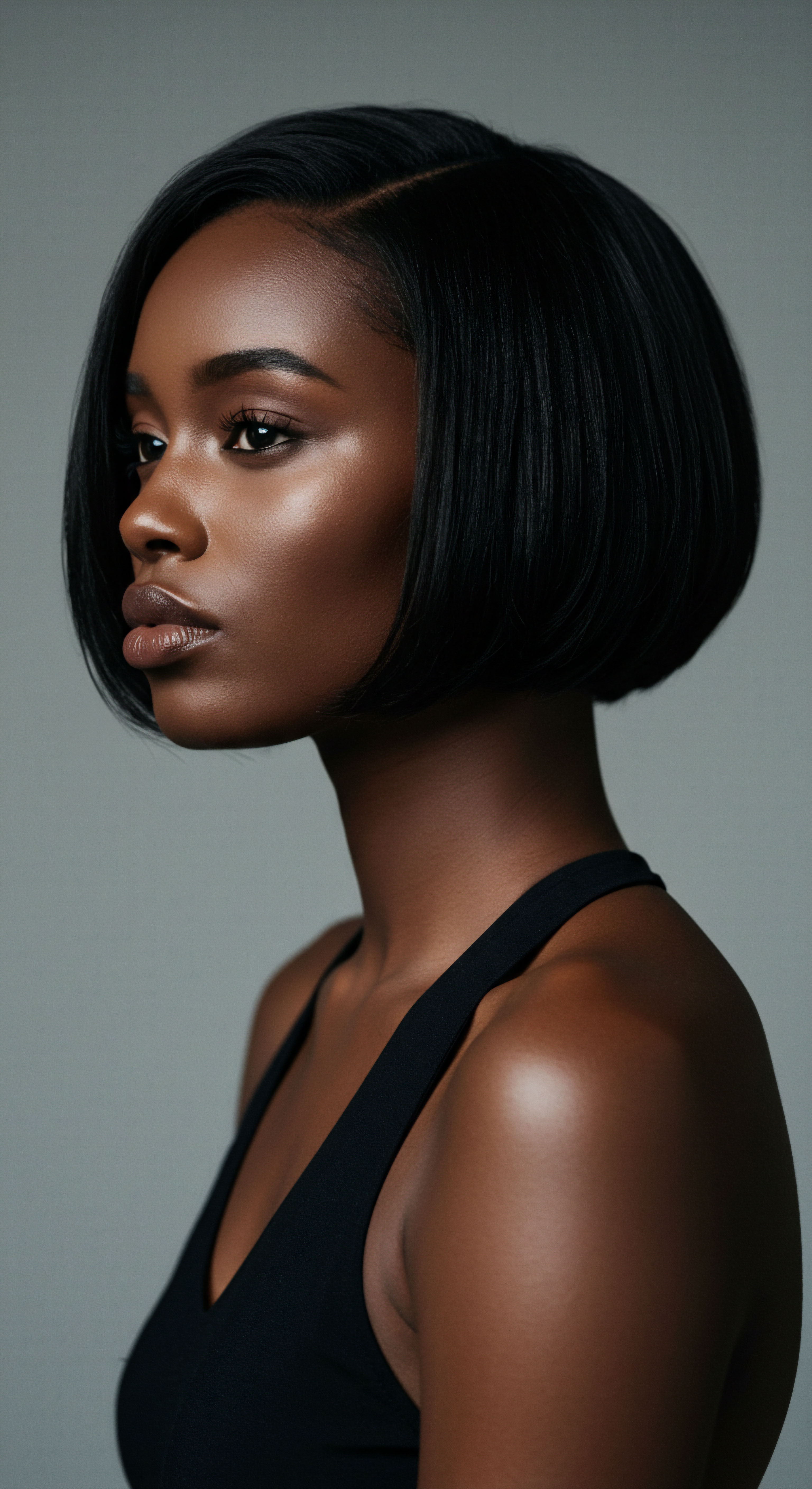
The Malassezia Metabolism and Lipid Dependency
A core tenet in understanding Malassezia’s role in scalp conditions is its absolute reliance on lipids for growth. These yeasts are unique in their inability to synthesize their own fatty acids, making them dependent on external sources. The sebum produced by our sebaceous glands provides this essential sustenance. When Malassezia metabolizes these triglycerides, it releases free fatty acids, some of which, particularly unsaturated ones, can trigger an inflammatory response in susceptible individuals, leading to the irritation and flaking characteristic of seborrheic dermatitis and dandruff.
The composition of an applied oil becomes paramount in this context. An oil rich in saturated fatty acids can become a ready feast for Malassezia, potentially encouraging its proliferation. This stands in stark contrast to oils containing fatty acids that either inhibit fungal growth or are not readily metabolized by these yeasts.
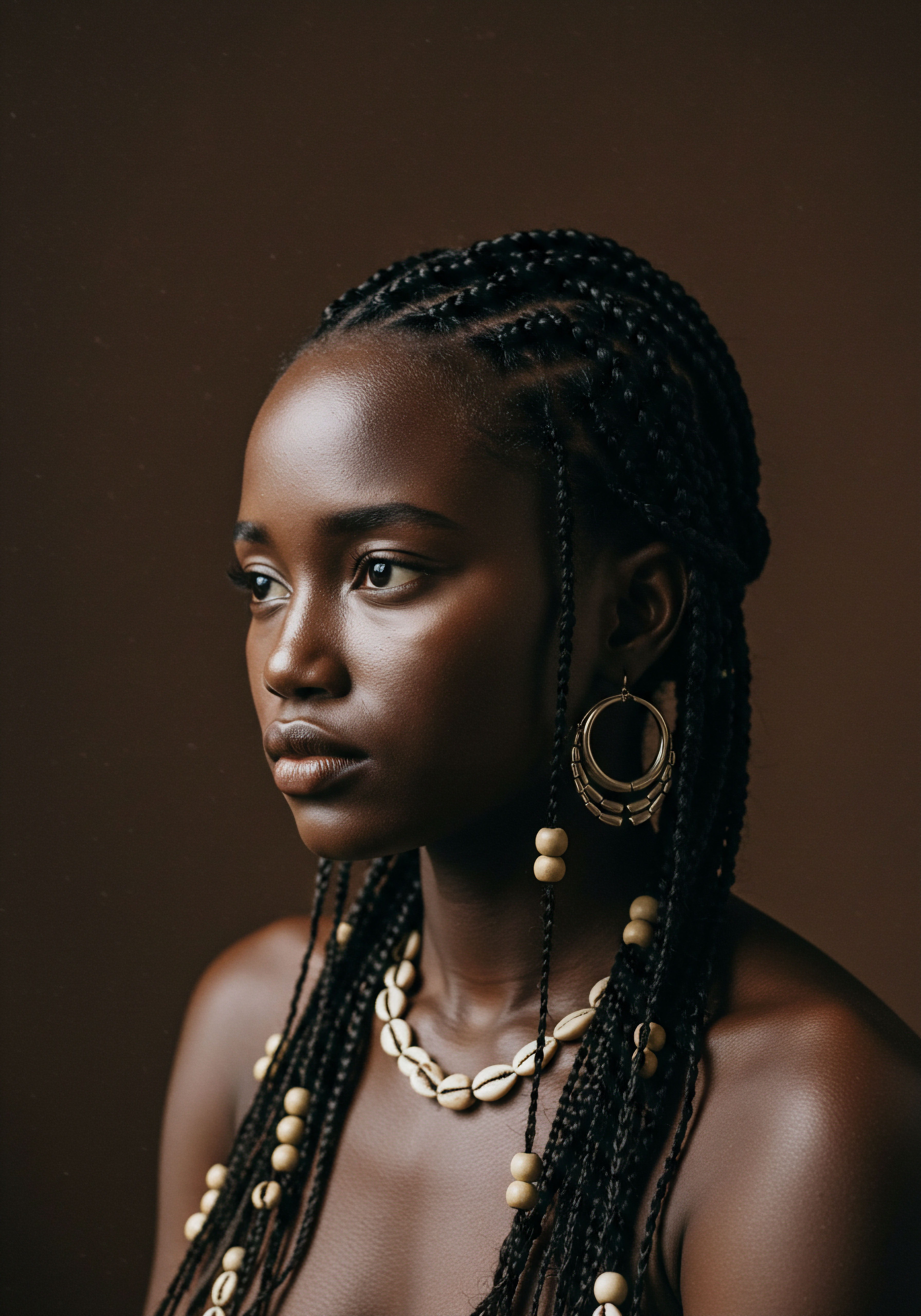
A Surprising Case Study Olive Oil’s Dual Nature
One of the most striking, perhaps even controversial, points of intersection between traditional practices and scientific findings concerns Olive Oil. For centuries, olive oil has been a staple in hair care across many cultures, revered for its conditioning properties. Yet, from a mycological standpoint, olive oil presents a fascinating paradox. It is so effective at supporting Malassezia growth that laboratory researchers routinely use it as a primary lipid supplement to cultivate these yeasts for study.
This presents a counter-intuitive reality for those seeking to alleviate dandruff ❉ applying olive oil, a substance often perceived as universally beneficial, might inadvertently provide the very sustenance that Malassezia needs to thrive and worsen scalp symptoms. This highlights a critical distinction ❉ what is beneficial for the hair strand may not always be beneficial for the scalp’s microbial balance.
The scientific literature presents a compelling paradox ❉ olive oil, a revered hair treatment in many cultures, is also a preferred growth medium for dandruff-causing Malassezia in laboratories.

Fatty Acid Profiles and Fungal Inhibition
The effectiveness of certain oils against scalp fungi often lies in their specific fatty acid composition.
- Lauric Acid ❉ Abundant in Coconut Oil, this medium-chain fatty acid exhibits significant antifungal properties. It appears to disrupt the cell membranes of various fungi, including Malassezia, leading to cell death. This mechanism offers a scientific explanation for the observed positive shifts in scalp fungal populations when coconut oil is applied.
- Caprylic Acid ❉ Also present in coconut oil, caprylic acid possesses antifungal qualities and is sometimes used in formulations targeting yeast overgrowth.
- Wax Esters ❉ Jojoba Oil, being primarily composed of wax esters, is distinct from triglyceride-rich oils. Malassezia, while lipophilic, may not metabolize these wax esters as readily as other fatty acids. This unique composition contributes to jojoba oil’s potential to help balance scalp oiliness without necessarily feeding fungal populations, and its antimicrobial properties lend further support.
The challenge, then, lies in discerning which oils, or more precisely, which fatty acid profiles, offer true support to the scalp’s microbial harmony versus those that might inadvertently contribute to dysbiosis. This requires a nuanced approach, moving beyond generalized notions of “natural is always better” to an evidence-based understanding.

Beyond Direct Antifungal Action Scalp Barrier and Microbiome Balance
The influence of oils on the scalp microbiome extends beyond direct fungicidal effects. Many oils, particularly those with emollient properties, can improve the scalp’s barrier function. A healthy skin barrier is less permeable, better able to retain moisture, and more resistant to external irritants and opportunistic microbial growth. For instance, coconut oil’s ability to reduce trans-epidermal water loss can contribute to a more hydrated and resilient scalp environment.
Furthermore, the concept of Microbiome Balance is gaining prominence. Instead of solely aiming to eradicate specific fungi, some approaches now focus on cultivating a diverse and balanced microbial community. This involves supporting beneficial bacteria and fungi that can naturally keep problematic species in check. Research on the scalp microbiome is still in its early stages, but emerging studies suggest that topical applications can influence this balance.
Consider the intricate dance between bacteria and fungi on the scalp. While Malassezia are primary players in dandruff, recent research suggests that certain bacterial species, such as Staphylococcus Capitis, are also significantly more abundant on dandruff-affected scalps. This indicates that a holistic approach to scalp health may need to consider both fungal and bacterial populations, and how oils might influence both. The scientific relay of understanding continues, moving towards a more interconnected view of scalp well-being, where the choices we make with oils become a conscious part of fostering this intricate microbial harmony.

Reflection
As we close our exploration into the scientific evidence surrounding oils and scalp fungal populations, a profound realization settles ❉ the world of hair care, particularly for textured strands, is a space where ancient wisdom and modern science converge. The simple act of applying an oil to the scalp, a practice passed down through generations, is revealed to be a complex interaction with an unseen microbial universe. Our journey through the roots of scalp biology, the rituals of oil application, and the scientific relay of discovery underscores that true hair well-being extends beyond the visible, reaching into the microscopic balance that governs our scalp’s health.
The path forward invites us to approach our hair care choices with a thoughtful hand, guided by both the comforting touch of tradition and the clear light of scientific understanding. It is a path that celebrates the resilience of textured hair, honoring its unique needs with knowledge and gentle care.

References
- Saxena, R. Mittal, P. Clavaud, C. Dhakan, D. B. Roy, N. Breton, L. Misra, N. & Sharma, V. K. (2021). Longitudinal study of the scalp microbiome suggests coconut oil to enrich healthy scalp commensals. Scientific Reports, 11(1), 7220.
- Hu, Z. Hu, L. Li, H. Wei, J. Li, Z. Ma, S. & Xu, J. (2020). Scalp Microbiome and Dandruff—Exploring Novel Biobased Esters. Cosmetics, 7(3), 60.
- Siegfried, E. C. & Glenn, E. A. (2012). Home Treatments for Dandruff May Worsen Condition. Archives of Pediatric and Adolescent Medicine, 166(8), 758-759.
- Mayo, T. & Aguh, C. (2020). Hair Oils May Worsen Seborrheic Dermatitis in Black Patients. Journal of Clinical and Aesthetic Dermatology, 13(9), 48–50.
- Malassezia. (n.d.). Wikipedia. Retrieved from https://en.wikipedia.org/wiki/Malassezia
- Rele, A. S. & Mohile, R. B. (2003). Effect of mineral oil, sunflower oil, and coconut oil on prevention of hair damage. Journal of Cosmetic Science, 54(2), 175-192.
- Remya, K. S. Mini, S. & Devi, P. S. (2018). Antimicrobial Susceptibility Pattern of Coconut Oil Extract on Selected Bacterial and Fungi. International Journal of Current Microbiology and Applied Sciences, 7(4), 3173-3180.
- Saxena, R. Mittal, P. Clavaud, C. Dhakan, D. B. Roy, N. Breton, L. & Sharma, V. K. (2021). Longitudinal study of the scalp microbiome suggests coconut oil to enrich healthy scalp commensals. Scientific Reports, 11(1), 7220.
- Pazyar, N. Yaghoobi, R. Kazerouni, A. & Rafeie, E. (2013). Tea tree oil in the treatment of acne vulgaris ❉ A review. Journal of Dermatological Treatment, 24(5), 350-353.
- Panahi, Y. Taghizadeh, M. Marzony, E. T. & Sahebkar, A. (2015). Rosemary oil vs minoxidil 2% for the treatment of androgenetic alopecia ❉ a randomized comparative trial. Skinmed, 13(1), 15-21.
- Jang, Y. H. Kim, M. K. Lee, B. H. & Kim, K. H. (2017). In vitro Study and Clinical Trial of Natural Essential Oils and Extract Against Malassezia Species. Journal of Mycology and Infection, 22(4), 183-189.
- Gupta, A. K. & Sharma, V. K. (2019). Role of Malassezia furfur and M. globosa in Dandruff and Seborrheic Dermatitis. Avens Publishing Group.
- Dermazen. (n.d.). The Truth About Oils for Seborrheic Dermatitis, Dandruff, & Fungal Acne ❉ What to Use and Avoid. Retrieved from https://dermazen.co/blogs/the-truth-about-oils-for-seborrheic-dermatitis-dandruff-fungal-acne-what-to-use-and-avoid
- Datta, S. & Roy, S. (2015). Comparison of potency of antifungal action of dandruff shampoos and different plant extracts. International Journal of Medical Research and Health Sciences, 4(2), 327-331.
- Lee, H. K. Choi, Y. J. & Kim, H. S. (2020). Efficacy of Topical Rosemary Extract Lotion Versus Topical 2% Ketoconazole Lotion in the Treatment of Seborrheic Dermatitis ❉ A Double Blind Randomized Controlled Clinical Trial. Dermatology Practical & Conceptual, 10(4).